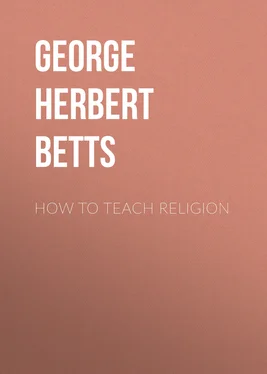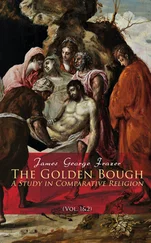George Herbert Betts - How to Teach Religion
Здесь есть возможность читать онлайн «George Herbert Betts - How to Teach Religion» — ознакомительный отрывок электронной книги совершенно бесплатно, а после прочтения отрывка купить полную версию. В некоторых случаях можно слушать аудио, скачать через торрент в формате fb2 и присутствует краткое содержание. Жанр: foreign_prose, Религиозная литература, foreign_religion, foreign_edu, foreign_antique, на английском языке. Описание произведения, (предисловие) а так же отзывы посетителей доступны на портале библиотеки ЛибКат.
- Название:How to Teach Religion
- Автор:
- Жанр:
- Год:неизвестен
- ISBN:нет данных
- Рейтинг книги:5 / 5. Голосов: 1
-
Избранное:Добавить в избранное
- Отзывы:
-
Ваша оценка:
- 100
- 1
- 2
- 3
- 4
- 5
How to Teach Religion: краткое содержание, описание и аннотация
Предлагаем к чтению аннотацию, описание, краткое содержание или предисловие (зависит от того, что написал сам автор книги «How to Teach Religion»). Если вы не нашли необходимую информацию о книге — напишите в комментариях, мы постараемся отыскать её.
How to Teach Religion — читать онлайн ознакомительный отрывок
Ниже представлен текст книги, разбитый по страницам. Система сохранения места последней прочитанной страницы, позволяет с удобством читать онлайн бесплатно книгу «How to Teach Religion», без необходимости каждый раз заново искать на чём Вы остановились. Поставьте закладку, и сможете в любой момент перейти на страницу, на которой закончили чтение.
Интервал:
Закладка:
All good teaching rests on a fourfold foundation of principles. These principles are the same from the kindergarten to the university, and they apply equally to the teaching of religion in the church school or subjects in the day school. Every teacher must answer four questions growing out of these principles, or, failing to answer them, classify himself with the unworthy and incompetent. These are the four supreme questions:
1. What definite aims have I set as the goal of my teaching? What outcomes do I seek?
2. What material , or subject matter , will best accomplish these aims? What shall I stress and what shall I omit?
3. How can this material best be organized , or arranged, to adapt it to the child in his learning? How shall I plan my material?
4. What shall be my plan or method of presentation of this material to make it achieve its purpose? What of my technique of instruction?
First of all, the teacher of religion must have an aim; he must know what ends he seeks to accomplish. Some statistically minded person has computed that, with all the marvelous accuracy of aiming modern guns, more than one thousand shots are fired for every man hit in battle. One cannot but wonder how many shots would be required to hit a man if the guns were not aimed at anything!
Is the analogy too strong? Is the teacher more likely than the gunner to reach his objective without consciously aiming at it? And can the teacher set up for attainment as definite aims as are offered the gunner? Do we know just what ends we seek in the religious training of our children?
Life itself sets the aim.—This much at least is certain. We know where to look for the aims that must guide us. We shall not try to formulate an aim for our teaching out of our own thought or reasoning upon the subject. We shall rather look out upon life, the life the child is now living and the later life he is to live, and ask: " What are the demands that life makes on the individual? What is the equipment this child will need as he meets the problems and tests of experience in the daily round of living? What qualities and powers will he require that he may the most fully realize his own potentialities and at the same time most fruitfully serve his generation? What abilities must he have trained in order that he may the most completely express God's plan for his life?" When we can answer such questions as these we shall have defined the aim of religious education and of our teaching.
The knowledge aim.—First of all, life demands knowledge . There are things that we must know if we are to avoid dangers and pitfalls. Knowledge shows the way, while ignorance shrouds the path in darkness. To be without knowledge is to be as a ship without a rudder, left to drift on the rocks and shoals. The religious life is intelligent; it must grasp, understand, and know how to use many great truths. To supply our children with religious knowledge is, therefore, one of the chief aims of our teaching.
Yet not all knowledge is of equal worth. Even religious knowledge is of all degrees of fruitfulness. Some knowledge, once acquired, fails to function. It has no point of contact with our lives. It does not deal with matters we are meeting in the day's round of experience. It therefore lies in the mind unused, or, because it is not used, it quickly passes from the memory and is gone. Such knowledge as this is of no real value. It is not worth the time and effort put upon its mastery; and it crowds out other and more fruitful knowledge that might take its place.
To be a true end of education, knowledge must be of such nature that it can be put at work . It must relate to actual needs and problems. It must have immediate and vital points of contact with the child's common experiences. The child must be able to see the relation of the truths he learns to his own interests and activities. He must feel their value and see their use in his work and in his play. This is as true of religious knowledge as of knowledge of other kinds. The religious knowledge the child needs, therefore, is a knowledge that can at once be incorporated in his life . To supply the child with knowledge of this vital, fruitful sort becomes, then, one great aim in the teaching of religion.
But knowledge alone is not enough. Indeed, knowledge is but the beginning of religious education, whereas we have been in danger of considering it the end. Many there are who know the ways of life but do not follow them. Many know the paths of duty, but choose an easier way. Many know the road to service and achievement, but do not enter thereon. If to do were as easy as to know what to do, then all of us would mount to greater heights.
The attitudes aim.—Life demands goals set ahead for achievement. It must have clearly defined the "worth whiles" which lead to endeavor. Along with the knowledge that guides our steps must be the impulses that drive to right action. Besides knowing what to do there must be inner compelling forces that get things done . The chief source of our goals and of the driving power within us is what, for want of a better term, we may call our attitudes .
Prominent among our attitudes are the interests, enthusiasms, affections, ambitions, ideals, appreciations, loyalties, standards, and attachments which predominate. These all have their roots set deep in our emotions; they are the measure of life's values. They are the "worth whiles" which give life its quality, and which define the goal for effort.
Chesterton tells us that the most important thing about any man is the kind of philosophy he keeps —that is to say, his attitudes . For it is out of one's attitudes that his philosophy of life develops, and that he settles upon the great aims to which he devotes himself. It is in one's attitudes that we find the springs of action and the incentives to endeavor. It is in attitudes that we find the forces that direct conduct and lead to character.
To train the intellect and store the mind with knowledge without developing a fund of right attitudes to shape the course of action is therefore even fraught with danger. The men in positions of political power who often misgovern cities or use public office as a means to private gain do not act from lack of knowledge or in ignorance of civic duty; their failure is one of ideals and loyalties; their attitude toward social trust and service to their fellow men is wrong. The men who use their power of wealth to oppress the poor and helpless, or unfairly exploit the labor of others to their own selfish advantage do not sin from lack of knowledge; their weakness lies in false standards and unsocial attitudes. Men and women everywhere who depart from paths of honor and rectitude fall more often from the lack of high ideals than because they do not know the better way.
The goal and the motive power in all such cases comes from a false philosophy of life; it is grounded in wrong attitudes. The education of those who thus misconceive life has failed of one of its chief aims— to develop right attitudes . Hence character is wanting.
The conduct, or application, aim.—The third and ultimate aim of education has been implied in the first two; it is conduct, right living . This is the final and sure test of the value of what we teach—how does it find expression in action ? Do our pupils think differently, speak differently, act differently here and now because of what we teach them? Are they stronger when they meet temptation from day to day? Are they more sure to rise to the occasion when they confront duty or opportunity? Are their lives more pure and free from sin? Do the lessons we teach find expression in the home, in the school, and on the playground? Is there a real outcome in terms of daily living ?
Читать дальшеИнтервал:
Закладка:
Похожие книги на «How to Teach Religion»
Представляем Вашему вниманию похожие книги на «How to Teach Religion» списком для выбора. Мы отобрали схожую по названию и смыслу литературу в надежде предоставить читателям больше вариантов отыскать новые, интересные, ещё непрочитанные произведения.
Обсуждение, отзывы о книге «How to Teach Religion» и просто собственные мнения читателей. Оставьте ваши комментарии, напишите, что Вы думаете о произведении, его смысле или главных героях. Укажите что конкретно понравилось, а что нет, и почему Вы так считаете.











